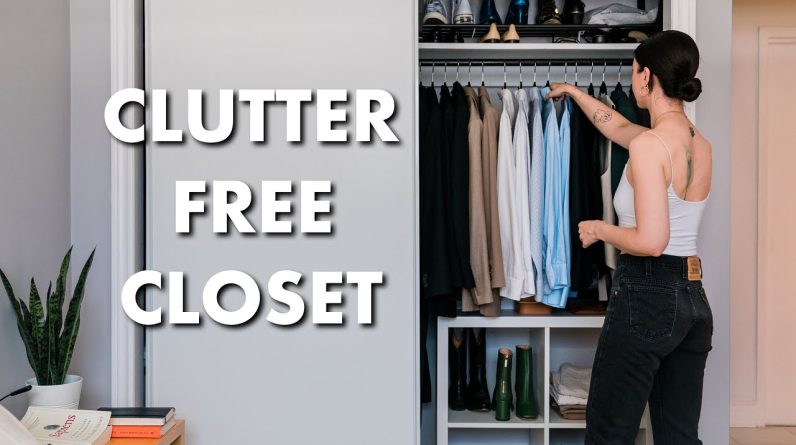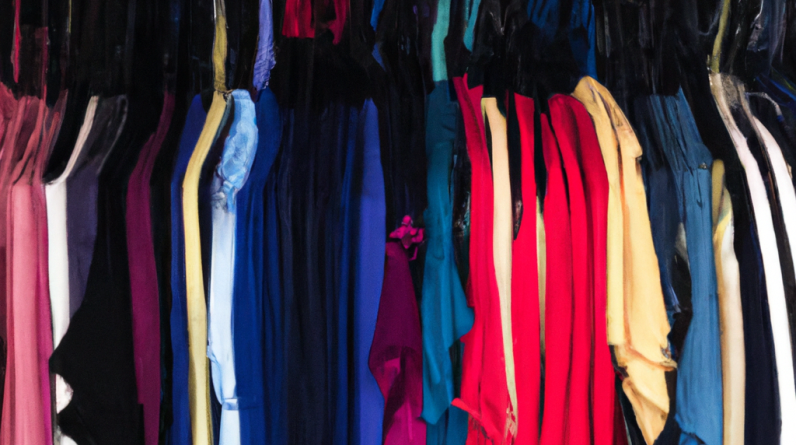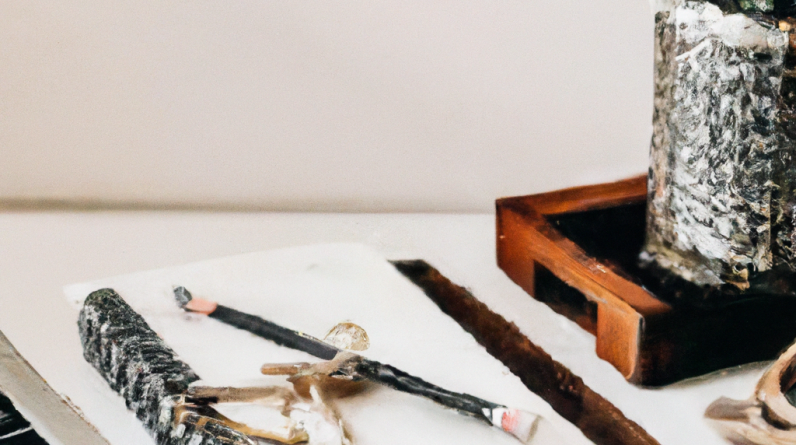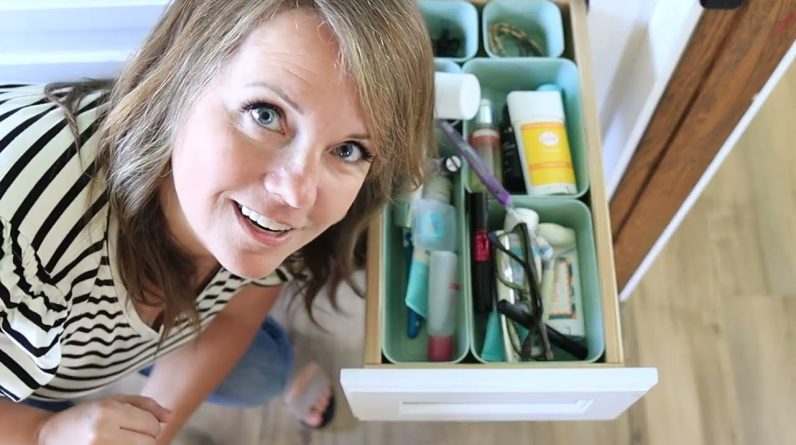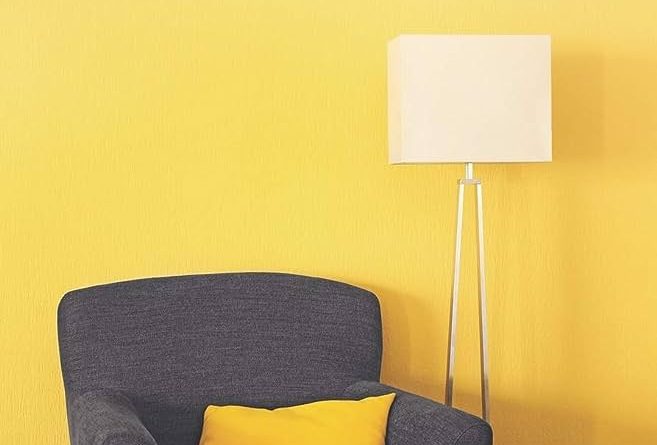
Looking to simplify your life and create a sense of order in your surroundings? Look no further than “The Ultimate Guide to Decluttering and Minimalism.” This comprehensive article on decluttering and embracing a minimalist lifestyle will provide you with practical tips and insights to help you declutter your space, minimize distractions, and find a sense of calm amidst the chaos. Whether you’re a seasoned minimalist or just starting out on your decluttering journey, this guide has got you covered. With a focus on real-life experiences and proven techniques, you’ll discover the power of letting go and creating a more intentional and fulfilling life. So, grab a cup of tea, sit back, and let’s embark on this transformative journey together.
Table of Contents
The Benefits of Decluttering and Minimalism
Improved mental clarity
Decluttering and adopting a minimalist lifestyle can greatly enhance your mental clarity. When your physical space is free from clutter, your mind becomes less cluttered as well. It allows you to think more clearly, make effective decisions, and prioritize tasks without distractions. Having an organized and simplified environment promotes a sense of tranquility and calmness, leading to improved mental well-being.
Reduced stress and anxiety
Living in a cluttered and chaotic environment can contribute to feelings of stress and anxiety. Decluttering and minimalism help alleviate these negative emotions by creating a serene atmosphere. Having less stuff to worry about and organize reduces the mental load, allowing you to focus on activities that bring you joy and relaxation. A clutter-free home promotes a sense of peace and tranquility, enabling you to unwind and recharge.
Increased productivity
A cluttered space can be overwhelming and hinder your productivity. By decluttering and embracing minimalism, you create an environment that is conducive to productivity. With fewer distractions and fewer items to manage, you can focus better on your work or goals. An organized and minimalist space allows you to efficiently use your time and energy, ultimately leading to increased productivity in all aspects of your life.
Enhanced creativity
A cluttered and disorganized space can stifle creativity. It can be challenging to think and generate fresh ideas when there is visual chaos around you. By decluttering and adopting a minimalist approach, you provide yourself with a clean and clutter-free canvas for your mind to explore and create. A minimalist environment fosters creativity by offering mental clarity and space for inspiration to thrive.
Improved focus and concentration
Clutter can be distracting and affect your ability to stay focused and concentrate on tasks. When you declutter and adopt a minimalist lifestyle, you remove these distractions, allowing you to fully immerse yourself in the present moment. With fewer visual and mental distractions, you can concentrate more effectively on the task at hand and achieve better results. Improved focus and concentration lead to increased efficiency and effectiveness in your daily activities.
Getting Started with Decluttering
Set clear goals
Before you begin decluttering, it’s essential to set clear goals for yourself. Define what you hope to achieve through the process, whether it’s creating a more organized home or embracing a minimalist lifestyle. Setting clear goals provides you with a sense of direction and motivation throughout the decluttering journey.
Create a plan of action
Developing a plan of action is crucial to ensure that you declutter efficiently and effectively. Break down the decluttering process into manageable steps, such as room by room or category by category. Determine a timeline for each step and establish a realistic schedule that works for you. Having a plan in place helps you stay organized and focused throughout the decluttering process.
Start small
When it comes to decluttering, starting small is key. Begin with a small area or a specific category of items rather than overwhelming yourself with tackling the entire house at once. By starting small, you can experience a quick sense of accomplishment and build momentum as you move forward. Gradually expand your decluttering efforts to larger areas, and soon you’ll see significant progress.
Sort items into categories
Sorting items into categories is a practical strategy for decluttering effectively. Create categories such as “keep,” “donate,” “sell,” and “discard.” As you go through your belongings, place each item into the appropriate category. This method helps you make decisions more efficiently and ensures that you only keep what is truly necessary and brings you joy.
Make decisions about each item
When decluttering, it’s essential to make conscious and intentional decisions about each item you come across. Ask yourself if the item holds value, if it is genuinely necessary, and if it contributes to your overall well-being. If an item no longer serves a purpose or brings you joy, it may be time to let it go. By making thoughtful decisions, you create space for what truly matters in your life.

This image is property of Amazon.com.
Practical Tips for Decluttering
One in, one out rule
Adopting the “one in, one out” rule is an effective way to prevent clutter from accumulating in the future. For every new item you bring into your home, commit to letting go of an existing item. This rule encourages mindful consumption and ensures that you maintain a clutter-free environment.
Donate or sell unwanted items
Instead of letting unwanted items gather dust, consider donating or selling them. Items that no longer serve a purpose for you may be valuable to others. Donating to charities or local organizations not only helps those in need but also brings a sense of fulfillment and contributes positively to your community. Selling unwanted items can be a great way to earn some extra money or fund future experiences.
Use storage solutions
Investing in storage solutions can help you maintain an organized and clutter-free space. Utilize bins, baskets, shelves, or drawers to store items neatly and efficiently. Choose storage solutions that align with your minimalist aesthetics and optimize the functionality of your space. Having designated places for your belongings contributes to a more organized and visually pleasing environment.
Regularly declutter and maintain organization
Decluttering should not be a one-time event. To maintain a minimalist lifestyle, make it a habit to declutter regularly. Set aside time on a weekly or monthly basis to reassess your belongings and identify any items that are no longer essential. Regular decluttering helps you stay on top of clutter and prevents it from accumulating over time.
Enlist help if needed
Decluttering and minimalism can be overwhelming, especially if you have a large amount of stuff or emotional attachments to certain items. If you find it difficult to declutter on your own, don’t hesitate to seek help from friends, family members, or professional organizers. Their support and expertise can provide fresh perspectives and make the process more manageable.
The Minimalist Lifestyle
Defining minimalism
Minimalism encompasses a mindset and lifestyle focused on intentionally living with less. It emphasizes the importance of eliminating excess possessions and distractions to create space for the things that truly matter. Minimalism encourages individuals to prioritize experiences, relationships, and personal growth over material possessions.
Benefits of minimalism
Embracing a minimalist lifestyle offers numerous benefits. By living with less, you reduce the financial burden of excessive consumption and free up resources to invest in experiences that enrich your life. Minimalism promotes a sense of freedom, as you are no longer tied down by the accumulation of unnecessary belongings. It encourages mindfulness, appreciation for simplicity, and the pursuit of genuine happiness.
Minimalist home design
Minimalist home design focuses on simplicity, functionality, and aesthetics. It involves decluttering and keeping only essential and meaningful items. Minimalist homes often feature clean lines, open spaces, and a limited color palette. Furniture and decor are intentionally chosen to serve a purpose while maintaining a visually pleasing and uncluttered environment.
Capsule wardrobes
A capsule wardrobe is a curated collection of essential and versatile clothing items that can be mixed and matched to create a variety of outfits. By reducing the number of clothes in your closet and focusing on quality, you simplify your daily decision-making and eliminate the feeling of having nothing to wear. Capsule wardrobes promote mindful consumption, personal style, and reduced environmental impact.
Minimalist travel
Minimalist travel involves packing light and embracing a simplistic approach to exploring new places. By traveling with fewer belongings, you reduce the physical and mental burden of lugging around excessive items. Minimalist travel encourages experiencing destinations fully, immersing yourself in local culture, and embracing the freedom of minimalism on the road.

This image is property of Amazon.com.
Minimalism and Finances
Savings and financial freedom
Adopting a minimalist lifestyle can lead to significant financial savings. By reducing unnecessary purchases and avoiding impulse buying, you save money in the long run. Minimalism encourages intentional spending, ensuring that your financial resources are allocated toward your most important priorities. This mindful approach to finances can provide a sense of financial freedom and security.
Avoiding unnecessary purchases
Minimalism encourages you to question the necessity and long-term value of potential purchases. By avoiding unnecessary purchases and focusing on essential items, you reduce the accumulation of clutter and maintain a minimalist environment. This conscious decision-making process helps you save money and only invest in items that truly align with your values and bring joy or value to your life.
Simplifying budgeting and expenses
A minimalist lifestyle simplifies budgeting and expense tracking. With fewer possessions and commitments, you can streamline your financial responsibilities. By decluttering your expenses and eliminating unnecessary subscriptions, memberships, or services, you can allocate your resources more intentionally and stay on top of your financial goals.
Investing in experiences over things
Minimalism emphasizes the value of experiences over material possessions. Instead of spending money on accumulating things, focus on investing in experiences that create cherished memories. This shift in mindset allows you to prioritize travel, hobbies, personal development, and quality time with loved ones. Investing in experiences brings long-lasting fulfillment and enriches your life in meaningful ways.
Reducing financial stress
Financial stress can be overwhelming and impact overall well-being. By adopting a minimalist lifestyle, you reduce unnecessary financial burdens and focus on what truly matters. Minimalism helps you distinguish between needs and wants, allowing you to align your financial decisions with your priorities. The reduction of clutter and consumerism provides a sense of financial peace and reduces stress related to money management.
Emotional Attachment and Letting Go
Understanding attachment to belongings
Emotional attachments to belongings are common, as they often carry memories, sentimental value, or represent aspects of our identity. However, holding onto items solely due to emotional attachment can contribute to clutter and hinder personal growth. Understanding the reasons behind your emotional attachment can help you develop a healthier relationship with your belongings.
Overcoming emotional barriers
Letting go of possessions can be challenging due to emotional barriers. Take time to process and reflect on the emotional attachments you have and identify the underlying reasons behind them. Practice gratitude for the items that have served you but no longer align with your current self or lifestyle. By consciously acknowledging and releasing emotional attachments, you create space for personal growth and new experiences.
Rediscovering value and joy in experiences
As you declutter and let go of possessions, you have the opportunity to rediscover the value and joy in experiences. Instead of finding fulfillment solely in material possessions, shift your focus toward creating meaningful memories and fostering connections with loved ones. Redirecting your attention from material things to experiences enriches your life and brings a deeper sense of contentment.
Seeking professional help if needed
Decluttering and letting go of possessions can be emotionally challenging, especially if you have a significant attachment to certain items. If you find it difficult to navigate through these emotions independently, seeking professional help may be beneficial. Professional organizers or therapists specialized in decluttering and emotional attachment can provide guidance and support throughout the process.
Getting support from loved ones
Enlist the support of loved ones when embarking on a decluttering journey. They can offer emotional support, practical assistance, and a fresh perspective. Sharing your goals and progress with trusted friends or family members creates a sense of accountability and encourages a positive mindset. Lean on your support system when facing emotional challenges and celebrate milestones together.

This image is property of Amazon.com.
Sustainable Decluttering and Minimalism
Reducing waste and consumption
Decluttering and embracing minimalism contribute to reducing waste and unnecessary consumption. By consciously assessing the items you own and regularly decluttering, you minimize the need for excessive production and the subsequent waste generated by consumerism. This eco-conscious approach promotes a more sustainable lifestyle that values quality over quantity.
Choosing eco-friendly products
Incorporating eco-friendly products into your minimalist lifestyle aligns with sustainable decluttering. Consider choosing products made from natural, renewable, or recycled materials. Favor items that are durable and have minimal impact on the environment throughout their lifecycle. Opting for eco-friendly alternatives supports sustainable practices and reduces your carbon footprint.
Repairing and repurposing items
Embrace a mindset of repair and repurposing instead of automatically discarding items. By repairing broken items or finding new purposes for them, you reduce waste and extend their lifespan. Repurposing items creatively allows you to express your individuality and contribute to a more sustainable circular economy. Consider DIY projects or donating items to individuals or organizations that can benefit from them.
Practicing mindful consumption
Minimalism encourages mindful consumption by consciously evaluating the value and impact of your purchases. Before buying new items, consider factors such as the necessity, quality, and ethical production of the product. By aligning your consumption with your values, you avoid unnecessary purchases and reduce your environmental footprint. Mindful consumption promotes a more sustainable and conscious approach to acquiring possessions.
Supporting sustainable businesses
When making purchasing decisions, choose to support businesses that prioritize sustainability and ethical practices. Seek out companies that prioritize fair trade, use sustainable materials, or have environmentally friendly production processes. By supporting sustainable businesses, you contribute to a more sustainable economy and send a message to the industry that sustainable practices are valued and in demand.
Creating an Organized and Minimalist Home
Implementing storage solutions
Implementing storage solutions is essential for maintaining an organized and minimalist home. Consider using efficient storage options such as shelving units, bins, baskets, or drawer organizers. Assign designated spaces for different categories of items, ensuring everything has its place. By implementing storage solutions, you optimize your space and create a visually pleasing and clutter-free environment.
Investing in quality over quantity
When selecting items for your home, prioritize quality over quantity. Choose well-made, durable, and timeless pieces that align with your aesthetics and needs. Investing in quality items reduces the need for frequent replacements and contributes to a more sustainable mindset. Focusing on quality over quantity leads to a more curated and minimalist living space.
Maintaining a clutter-free environment
To maintain a clutter-free home, it’s crucial to adopt daily habits and routines that prevent clutter from accumulating. Regularly assess your belongings and remove items that no longer serve a purpose or bring you joy. Develop a habit of immediately putting things back in their designated places after use and avoid unnecessary accumulation of items. By consciously maintaining a clutter-free environment, you create a peaceful and organized home.
Optimizing space and functionality
Optimizing the space and functionality of your home facilitates a minimalist lifestyle. Arrange furniture and decor in a way that maximizes open space and natural light. Consider multifunctional furniture pieces that serve more than one purpose, reducing the need for excessive items. Explore creative storage solutions that make the most of your available space. By optimizing the space and functionality of your home, you create a harmonious and efficient living environment.
Creating a calming and peaceful atmosphere
A minimalist home fosters a calming and peaceful atmosphere. Choose a color palette that promotes tranquility, such as muted tones or natural earthy colors. Incorporate elements of nature, such as plants or natural materials, to bring serenity into your space. Reduce visual clutter and focus on essential elements that contribute to a sense of calmness. Creating a calming and peaceful atmosphere in your home enhances your overall well-being.
This image is property of covers.storytel.com.
Decluttering Digital Spaces
Organizing files and folders
Taking the time to organize your digital files and folders is essential for a decluttered digital space. Create a logical file structure that allows you to find documents, photos, and other files easily. Use descriptive file names and create folders based on topics or categories. Regularly delete unnecessary files or duplicates to keep your digital space streamlined and efficient.
Deleting unnecessary emails
An overflowing inbox can add mental stress and clutter to your digital life. Take time to regularly declutter your email inbox by deleting or unsubscribing from unwanted emails. Create folders or labels to organize emails based on priority or topic, making it easier to locate important messages. Email productivity tools can also help you automate email filing and reduce the time spent on email management.
Managing digital photos and documents
Digital photos and documents can quickly accumulate, causing digital clutter. Develop a system for organizing and managing your digital photos and documents. Use photo management software or cloud storage solutions to store and organize your photos effectively. Create folders and use descriptive tags or keywords to make it easier to find specific files. Regularly delete duplicates, blurry photos, or files that are no longer needed.
Limiting social media usage
Social media can consume a significant amount of time and contribute to digital clutter. Set boundaries and limits for your social media usage. Consider taking regular breaks or implementing designated “social media-free” periods in your day or week. Unfollow accounts or groups that no longer bring value or joy to your life. By limiting your social media usage, you reduce distractions and reclaim time for more meaningful activities.
Using digital minimalism apps
Digital minimalism apps can help you manage and declutter your digital spaces. These apps can assist with organizing files, managing digital subscriptions, or tracking screen time. Explore different apps and find ones that align with your specific needs and goals. By incorporating digital minimalism apps into your routine, you can streamline and simplify your digital life.
Maintaining a Balanced Approach
Finding your own definition of minimalism
Minimalism is a personal journey, and it’s important to find your own definition of what it means to you. Reflect on your values, priorities, and goals to develop a version of minimalism that aligns with your unique circumstances. Embrace what brings you joy and contributes positively to your life, rather than adhering to strict guidelines imposed by others.
Avoiding perfectionism
Strive for progress, not perfection, when embracing decluttering and minimalism. It’s unrealistic to achieve a completely minimalist lifestyle overnight. Instead, focus on gradual improvements and celebrate small victories along the way. Accept that minimalism looks different for everyone and that it’s okay to have areas in your life where you allow for a bit more clutter or personal expression.
Balancing functionality and aesthetics
Maintaining a balance between functionality and aesthetics is crucial for a successful minimalist lifestyle. While it’s important to prioritize the functionality and purpose of items, aesthetics also play a role in creating a visually pleasing environment. Find a harmony between the two by selecting items that serve a purpose while also bringing you joy and aligning with your aesthetics.
Adapting as life changes
As life evolves, so do our needs and circumstances. Embrace the flexibility of minimalism by adapting your lifestyle to accommodate changes. Be open to reassessing your belongings, habits, and priorities whenever necessary. By remaining adaptable, you can continue to create a minimalist lifestyle that supports your overall well-being and personal growth.
Continuing self-reflection and evaluation
Decluttering and minimalism are ongoing processes that require regular self-reflection and evaluation. Take time to reflect on your progress, assess your current needs, and identify areas for improvement. Continuously evaluate your possessions, habits, and lifestyle to ensure they align with your values and goals. Regular self-reflection allows you to make necessary adjustments and maintain a balanced and fulfilling minimalist lifestyle.
Through embracing decluttering and minimalism, you can experience the numerous benefits for your mental well-being, productivity, and overall satisfaction with life. By following practical tips, adopting a minimalist lifestyle, and addressing emotional attachments, you create a harmonious and clutter-free environment. Sustainable practices and maintaining a balance between functionality and aesthetics further enhance your minimalist journey. Embrace the transformative power of decluttering and minimalism, and create a life that prioritizes what truly matters.

This image is property of Amazon.com.


